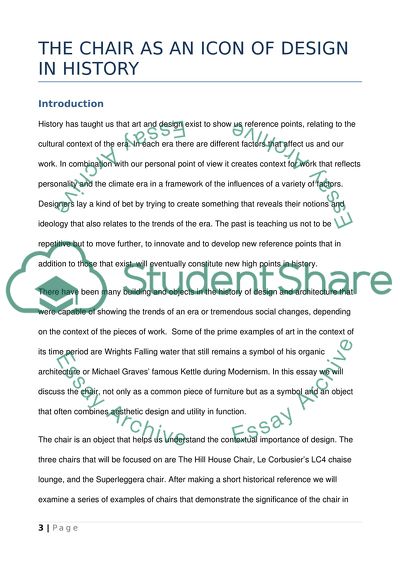Cite this document
(The Chair as an Icon of Design in History Coursework Example | Topics and Well Written Essays - 2750 words, n.d.)
The Chair as an Icon of Design in History Coursework Example | Topics and Well Written Essays - 2750 words. https://studentshare.org/design-technology/1764102-the-chair-is-an-icon-for-the-history-of-design
The Chair as an Icon of Design in History Coursework Example | Topics and Well Written Essays - 2750 words. https://studentshare.org/design-technology/1764102-the-chair-is-an-icon-for-the-history-of-design
(The Chair As an Icon of Design in History Coursework Example | Topics and Well Written Essays - 2750 Words)
The Chair As an Icon of Design in History Coursework Example | Topics and Well Written Essays - 2750 Words. https://studentshare.org/design-technology/1764102-the-chair-is-an-icon-for-the-history-of-design.
The Chair As an Icon of Design in History Coursework Example | Topics and Well Written Essays - 2750 Words. https://studentshare.org/design-technology/1764102-the-chair-is-an-icon-for-the-history-of-design.
“The Chair As an Icon of Design in History Coursework Example | Topics and Well Written Essays - 2750 Words”. https://studentshare.org/design-technology/1764102-the-chair-is-an-icon-for-the-history-of-design.


